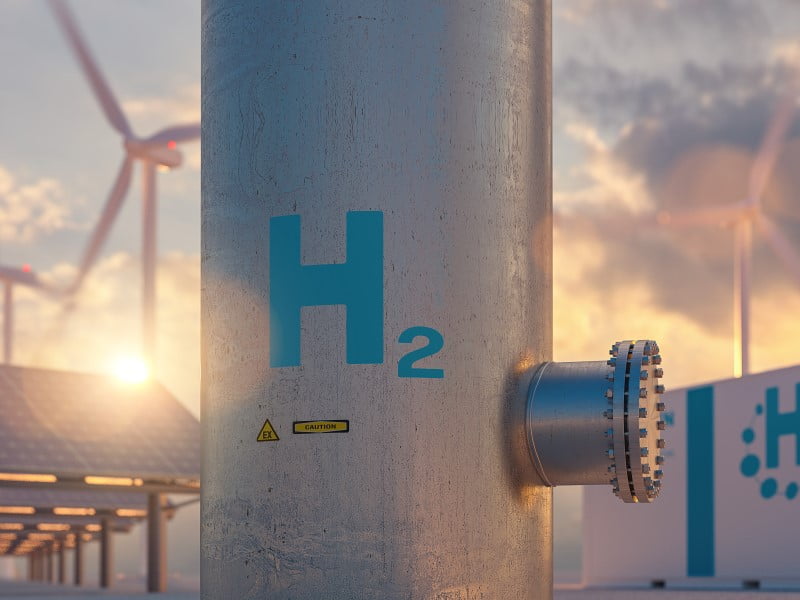The government’s clean energy funding agency has committed $59.1 million to renewable hydrogen and low emissions iron and steel projects, surprising applicants with almost 20 per cent more than expected.
Up to $50 million had initially been allocated across two rounds for renewable hydrogen and iron and steel grant. But the hydrogen round was expanded “due to the quality of applications” and comes as the Albanese government signals a big bet on clean exports.
In total 21 research and commercialisation projects were funded across universities, research organisations, startups, and companies across both rounds, announced this week by the Australian Renewable Energy Agency (ARENA).

ARENA’s Hydrogen R&D round focuses on the commercialisation of renewable hydrogen through innovation in production, storage, and distribution technologies, while the Iron and Steel R&D round focused on emissions abatement pathways.
Projects are receiving funding over two stages, a core research stage followed by a research commercialisation stage to scale and demonstrate the market application of research breakthroughs.
The federal government wants to help decarbonise the iron and steel value chain to help meet its emission reduction targets and capitalise on an export opportunity for green metals as other countries seek to meet their emissions reduction targets, in some cases with cross border carbon tariffs.
Australia is currently the world’s largest exporter of iron ore, supplying 53 per cent of international exports each year. The government also wants to move up the value chain and produce green metals locally.
This will be supported by a new Future Made in Australia Act, revealed on Thursday, expected to offer subsidies for green metals, green hydrogen, and advanced manufacturing.
ARENA chief executive Darren Miller said the Agency has “strong track record in funding and supporting early-stage innovation”.
“Through our strategic priorities, we have highlighted the importance of renewable hydrogen and low emissions metals growing to become a significant export industry,” Mr Miller said.
“Innovation starts in the lab, and we have the best minds taking our decarbonisation efforts to the next level – to the benefit of all Australians through jobs, lower emissions and cheaper energy.”
Under the hydrogen round, $34.2 million was allocated to 13 projects collectively worth $99.6 million. Eight of the hydrogen projects are led by universities.
Meanwhile, the iron and steel round funded eight projects collectively worth $102.7 million. Five of the iron and steel projects are led by universities.
The iron and steel project with the highest total cost ($42.6 million) is being undertaken by Fortescue subsidiary MIH2, for work on low temperature direct electrochemical reduction for zero emissions iron.
MIH2 is also received a grant for its $14.3 million project to scale up and demonstrate “next generation CSIRO axial flow electrolyser for green hydrogen production”.
The most expensive project ($16.5 million) on the hydrogen side is being led by Curtin University which is working on how to export hydrogen using a powder.
A full list of projects is below:
| Recipient | Project | ARENA Funding | Total Project Cost |
| The University of Wollongong | Australian Pilbara Iron Ores in an Electric Smelting Furnace Process | $2 million | $4.2 million |
| Australian National University | De-risking large-scale Australian fine-ore hydrogen ironmaking | $4.8 million | $13.7 million |
| The University of Newcastle | Electric Smelting of Australian Hematite-Goethite DRI | $2.9 million | $5.9 million |
| MIH2 Pty Ltd (subsidiary of Fortescue) | Low Temperature Direct Electrochemical Reduction for Zero Emissions Iron | $5 million | $42.6 million |
| HILT CRC Limited | Upgrading Iron Ore for DRI Production Using Seawater Reverse Osmosis Brines Project | $1.4 million | $5.7 million |
| Macquarie University | Upcycling of steelmaking slag for material reuse | $1.5 million | $7.2 million |
| CSIRO | Low temperature iron ore agglomeration process for Australian iron ores | $2.6 million | $5.3 million |
| University of New South Wales | Blast Furnace Innovations: Integrating New Injections & Burdens for Sustainable, Low-Carbon Ironmaking Transitions | $4.4 million | $18.1 million |
| Future Energy Exports CRC Limited | Development and demonstration of safe, efficient hydrogen liquefaction through optimized mixed refrigerants and plant design | $2.1 million | $6.3 million |
| Cavendish Renewable Technology Pty Ltd | Efficient, scalable, and modular ammonia to hydrogen/electricity conversion system development and demonstration | $1.6 million | $4.3 million |
| Hysata Pty Ltd | High-temperature, Ultra-high Efficiency Green Hydrogen Production | $3 million | $5.9 million |
| Curtin University | Hydrogen export using a powder | $5 million | $16.5 million |
| Monash University | Lowering the cost of proton exchange water electrolysis systems | $2.3 million | $7.2 million |
| Australian National University | Accelerating the Commercialisation of the Direct Solar-to-Hydrogen Technology | $2.2 million | $7.5 million |
| University of Melbourne | Mega-Scale Liquid H2 Storage with Super-Insulated Full-Containment and Zero-Boil-Off | $3.1 million | $6.6 million |
| The University of Sydney | Advanced Manufacturing Alkaline Electrolyser Cell- Stacks for Affordable and Scalable Green Hydrogen Production | $2.2 million | $5.9 million |
| University of New South Wales | Production, Multiphase Electrolysers for Renewable Ammonia Production | $1.9 million | $7.2 million |
| Australian National University | H2 storage enabled by nano-scaffolded gas hydrate capsules with ground-source energy utilisation | $1.4 million | $5.5 million |
| Jupiter Ionics Pty Ltd | Capital Cost reduction in electrochemical ammonia synthesis | $2.5 million | $6.5 million |
| Royal Melbourne Institute of Technology | Solar-Energy-Driven Modular Floatable Device for Scalable Green Hydrogen Production from Wastewater | $2 million | $5.9 million |
| MIH2 Pty Ltd (subsidiary of FFI) | Scale up and demonstration of next generation CSIRO axial flow electrolyser for green hydrogen production | $4.9 million | $14.3 million |
Do you know more? Contact James Riley via Email.

